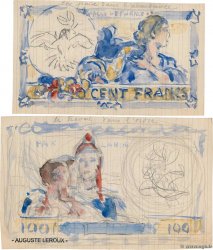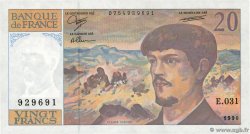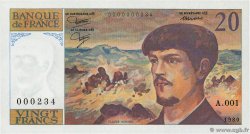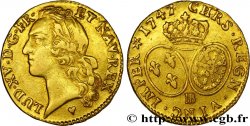Live auction - bmv_948579 - MEROVINGIAN COINAGE - BANASSAC (BANNACIACO) - Lozere Denier
Чтобы принять участие в торгах, вы должны войти в систему и стать подтвержденным участником аукциона. Войдите, чтобы сделать ставку. Ваш аккаунт будет подтвержден в течение 48 часов. Не ждите до закрытия торгов, чтобы зарегистрироваться.Сделав ставку на данный товар, вы вступаете в юридическое соглашение на покупку выбранного товара и нажатием кнопки «Сделать ставку» подтверждаете принятие вами условий интернет-аукционов cgb.fr.
Ставка может бить сделана только в полном эквиваленте евро. Торги закроются согласно времени, указанному в описании товара, все ставки, сделанные после закрытия торгов, учитываться не будут. Не следует откладывать предложение вашей ставки до последнего момента, так как система может не успеть обработать вашу заявку, и ваша ставка не будет принята. Более детальную информацию вы найдёте здесь: FAQ по интернет-аукционам.
Все ставки победителей подлежат комиссии 18%.
Все ставки победителей подлежат комиссии 18%.
| Оценить : | 1 200 € |
| Цена : | Нет ставки |
| Максимальная предлагаемая цена : | Нет ставки |
| Конец торгов : | 24 September 2024 15:56:29 |
Тип Denier
Дата: (VIIe-VIIIe siècles)
Дата: s.m.
Монетный двор / Город: Banassac
Металл: silver
Диаметр: 12 mm
Ориентация осей монеты: 3 h.
Вес: 1,13 g.
Редкость: R3
Комментарии о состоянии
Denier frappé sur un flan irrégulier et un peu court. Hauts reliefs. Patine grise
Ссылки в каталоге: :
Происхождение:
Monnaie provenant de la collection Philippe Schiesser
Лицевая сторона
Аверс: описание: Calice à deux anses ou mitre stylisée (?), surmonté d’une croixet.
Обратная сторона
Реверс: легенда: A, K, W, A.
Реверс: Описание: Croix aux bras bifides, une lettre dans chaque canton.
Комментарий
Le calice, typique du monnayage d’argent de Banassac, est différent sur ce denier par rapport à ceux du Belfort, par exemple. Pour ce type, toutes variétés confondues, G. Depeyot n’a répertorié que neuf exemplaires ; les trois du Belfort, trois de la vente Cahn 1932, deux du trésor de Saint-Pierre-les Etieux et un du trésor de Bais. Un dixième exemplaire est aussi classé à Banassac à cause du calice, mais d’un tout autre type (cf. B. 5757).
Au revers, les lettres A et Z sont relativement nettes dans les 3e et 4e cantons de la croix, mais les lettres dans les deux premiers cantons sont difficiles à identifier. D’après les monnaies n° 774 à 777 du Belfort, il devrait s’agir de RA-G ou LA. Les lettres RAG ont fait attribuer ces deniers à Ragenfrid, mais A. de Belfort les restitue à Banassac en raison des analogies avec les monnaies d’or au calice.
Seulement sur l’exemplaire proposé ici, l’analogie n’est pas du tout évidente et les lettres semblent plutôt être E (rétrograde) au premier canton et D au deuxième canton !
Bien qu’aucune autre monnaie d’argent s’en approchant ne semble être publiée, il est permis de douter de la parenté de ce denier avec les monnaies traditionnellement attribuées à Banassac ?.
The chalice, typical of the silver coinage of Banassac, is different on this denarius compared to those of Belfort, for example.. For this type, all varieties combined, G. Depeyot only listed nine examples; the three from Belfort, three from the 1932 Cahn sale, two from the Saint-Pierre-les-Etieux treasure and one from the Bais treasure.. A tenth example is also classified in Banassac because of the chalice, but of a completely different type (cf.. B. 5757).
On the reverse, the letters A and Z are relatively clear in the 3rd and 4th cantons of the cross, but the letters in the first two cantons are difficult to identify. According to coins no. 774 to 777 from Belfort, it should be RA-G or LA. The letters RAG have attributed these coins to Ragenfrid, but A. Belfort returned them to Banassac because of the similarities with the gold coins with the chalice.
Only on the example proposed here, the analogy is not at all obvious and the letters seem rather to be E (retrograde) in the first canton and D in the second canton! Although no other silver coin approaching it seems to be published, it is permissible to doubt the relationship of this denier with the coins traditionally attributed to Banassac?
Au revers, les lettres A et Z sont relativement nettes dans les 3e et 4e cantons de la croix, mais les lettres dans les deux premiers cantons sont difficiles à identifier. D’après les monnaies n° 774 à 777 du Belfort, il devrait s’agir de RA-G ou LA. Les lettres RAG ont fait attribuer ces deniers à Ragenfrid, mais A. de Belfort les restitue à Banassac en raison des analogies avec les monnaies d’or au calice.
Seulement sur l’exemplaire proposé ici, l’analogie n’est pas du tout évidente et les lettres semblent plutôt être E (rétrograde) au premier canton et D au deuxième canton !
Bien qu’aucune autre monnaie d’argent s’en approchant ne semble être publiée, il est permis de douter de la parenté de ce denier avec les monnaies traditionnellement attribuées à Banassac ?.
The chalice, typical of the silver coinage of Banassac, is different on this denarius compared to those of Belfort, for example.. For this type, all varieties combined, G. Depeyot only listed nine examples; the three from Belfort, three from the 1932 Cahn sale, two from the Saint-Pierre-les-Etieux treasure and one from the Bais treasure.. A tenth example is also classified in Banassac because of the chalice, but of a completely different type (cf.. B. 5757).
On the reverse, the letters A and Z are relatively clear in the 3rd and 4th cantons of the cross, but the letters in the first two cantons are difficult to identify. According to coins no. 774 to 777 from Belfort, it should be RA-G or LA. The letters RAG have attributed these coins to Ragenfrid, but A. Belfort returned them to Banassac because of the similarities with the gold coins with the chalice.
Only on the example proposed here, the analogy is not at all obvious and the letters seem rather to be E (retrograde) in the first canton and D in the second canton! Although no other silver coin approaching it seems to be published, it is permissible to doubt the relationship of this denier with the coins traditionally attributed to Banassac?








 Cообщить об ошибке
Cообщить об ошибке Распечатать страницу
Распечатать страницу Отправить мой выбор
Отправить мой выбор Задать вопрос
Задать вопрос Consign / sell
Consign / sell
 Информация
Информация











